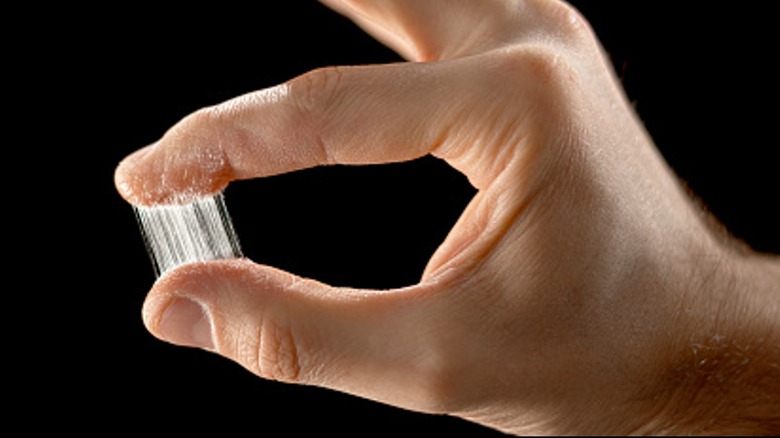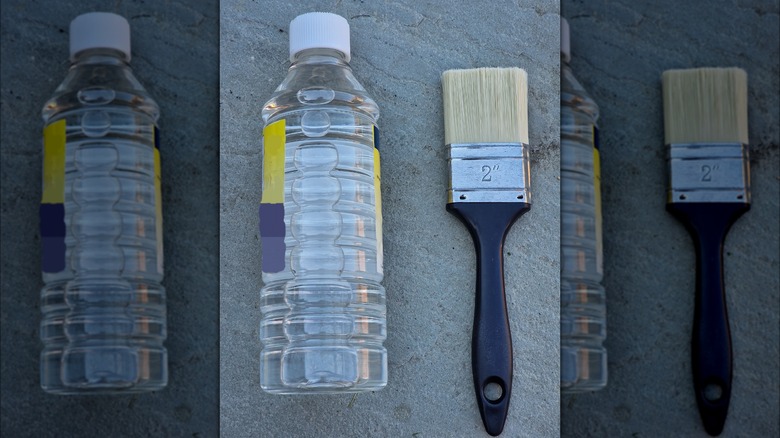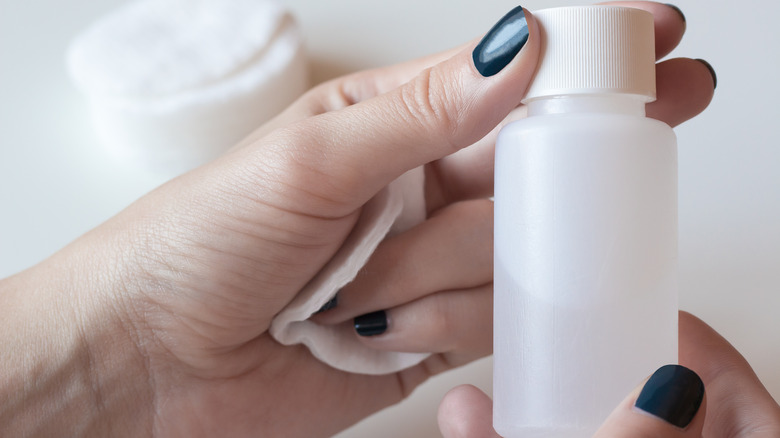The Common Paint Thinner That Can Get Rid Of Dried On Super Glue
In the realm of household problem-solving, while commonly associated with artistic pursuits, mineral spirits stands tall as an unsung hero, quietly wielding its power to tackle more than just paint-related issues. Often confined to the toolbox of DIY enthusiasts, its prowess also extends to the realm of home repairs. This unassuming solvent, also called paint thinner or white spirit, harbors a secret weapon against a seemingly unrelated adversary — dried-on super glue. The solvent's unique molecular structure allows it to infiltrate the stubborn bonds of dried superglue, showcasing another side of its utility.
The overlooked connection between mineral spirits and adhesive sheds light on the versatility of this household staple. This revelation transforms mineral spirits from a mere art studio companion to an indispensable ally in the fight against super glue-related mishaps. As we navigate the often perplexing landscape of such household conundrums, this product is a silent problem-solver. By exploring the untapped potential of mineral spirits, we not only expand on its purpose but also empower ourselves to tackle everyday issues with newfound confidence.
How to use mineral spirits on dried super glue
When confronted with the sticky situation of super glue stuck to the skin, mineral spirits takes on a surprisingly gentle role. Unlike messy alternatives – like butter and lemon juice or vinegar — or other super glue removal hacks you probably haven't thought of, this solvent offers a simple and delicate solution. Dab a small amount of mineral spirits on a cotton ball and gently rub it over the affected skin. The solvent's mild action effectively breaks down the adhesive bonds without causing undue irritation, ensuring a painless separation.
Transitioning from the skin to fabrics, mineral spirits continues to showcase its versatility. For fabrics like clothing or upholstery with dried super glue stuck to it, begin by blotting the affected area with a clean cloth. Apply a small amount of mineral spirits and delicately work it into the fabric using a soft brush or cotton ball. Rinse and then lift the glue off the fabric. The solvent's penetrative properties gently dissolve the adhesive, restoring the fabric to its original state without leaving a trace of the sticky residue.
Moving beyond skin and fabrics, mineral spirits proves equally adept at tackling challenges on hard surfaces. Whether it's a countertop, glass, or plastic, the solvent can be applied with precision. Use a soft, lint-free cloth to apply the mineral spirits, ensuring even coverage over the affected area. The solvent's controlled action dissolves the glue, allowing for easy removal without compromising the integrity of the surface.
How it works and alternatives
Unlocking the secrets of mineral spirits' prowess against dried-on super glue involves delving into its unique chemistry. As a hydrocarbon-based solvent, mineral spirits boasts compounds that grant it the ability to disrupt adhesive bonds without causing harm to surfaces. When applied, mineral spirits penetrates the dried glue, destabilizing its tightly bound structure. This process transforms the once unyielding adhesive into a more pliable substance, ready for easy separation. The solvent's molecules integrate into the structure of the super glue, causing it to lose its grip on surfaces like skin, fabric, or hard materials.
Dried super glue also won't stand a chance against an item already in your cabinet. If you can't find mineral spirits or need to deal with a glue-related issue more quickly, then rubbing alcohol or an acetone-based nail polish remover will work, too. Take care when using on wooden surfaces, however, as it could cause some discoloration. Test in an inconspicuous area first before tackling a larger area.


